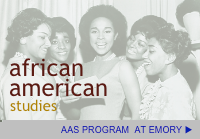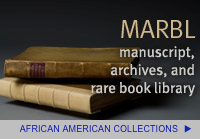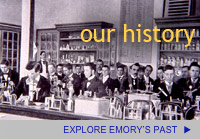Kitty’s Cottage and the Kitty Controversy
The quote, “Let us stand by what is good and make it better if we can,” greets every visitor to Oxford College as they walk across the quad and see the small, but prominent sign just across the students’ center. When I think of Oxford, my alma mater, a division of Emory and the University’s historic home, this quote always comes to mind and by association so does the man who said it, Atticus Haygood. While many see this quotation on a daily basis, I wager it is not what most people associate with Haygood. Instead it is the “New South Sermon” that he famously delivered on Thanksgiving day 1880.
I am not saying that people remember that speech because they have read it or because it is a part of Emory’s curriculum. Instead, the “New South Speech” is a part of a cultural narrative. It is a watershed moment for Emory University and its rise onto a national stage. Thus, it is remembered as a triumph. After all, the sermon’s progressive nature? impressed Seney, a wealthy railroad tycoon, and native of Brooklyn, New York, to become a benefactor of the college. His gift was so large, over $100,000 before adjusted for inflation, that the largest building at Oxford bears Seney’s name.
To be fair, with respect to courting Seney, the “New South” was a rousing success. However, there are parts of the speech that are clearly rooted in Haygood’s upbringings in a region inundated with white supremacy. As an institution, Emory does not include this in their cultural narrative and, frankly, as an Emory Student I do not know if I want them too. No one wants an important moment in his or her school’s history to be spoiled with white supremacy.
Yet, one must contemplate the consequences of constructing a narrative that ignores an important part of Haygood’s address. True, no one wants to think about racism when enjoying a Founder’s Day celebration or learning Emory History on a tour and yet, does that justify a lie? The answer is clearly no. Instead, both the individual and institution alike must use the tools of an historian to find a way to live with the full legacy of Haygood’s “New South.” This begins by recognizing bias, is sustained by recognizing truth, and ends with contextualizing said truth.
Admitting bias seems easy. For example, I know I like Atticus Haygood. When I think of him, I think of that quote, and Oxford, and the dormitory that bears his name. Yet, I also love Emory University and I do not want to do anything to harm its reputation. This is the hardest bias to overcome because there is a real threat in this. If someone slanders Haygood or calls him a racist,that does not really matter. He is dead, but Emory is very much alive. One might fear that if the racial dynamics of the “New South” speech were brought to life many might think that Emory celebrates racism. Knowing this, one can try to overcome said feelings as they clearly stand in the way of the truth.
This next step is the most crucial and the most difficult. It requires jumping into the text and exploring Haygood’s words, independent of outside narratives or personal agenda. What one learns is very informative. First, Haygood is a visionary in many ways. Only 15 years after the Civil War he pledged his outright support for the federal government and, further more, compels religious people to do so as their duty to God. He was grateful that the South was in better condition economically than at the end of the Confederacy, citing increased production and more people at work. And, of course, he famously came out in support of the end of slavery. He justified his belief by saying that it was better for all people, black and white, but especially white children who would now have to grow up doing manual labor instead of succumbing to idleness.
Of course, with Haygood’s racial liberalism came his racism. After declaring that he believed it was best slavery was abolished, Haygood made a slew of statements that seriously call into question his conviction. First, Haygood thought there were good aspects to slavery and told his audience that he was sad that many exaggerated its unflattering characteristics. He then lauded the role slavery played in the Christianizing of millions of black people. Before moving on to the positive aspects of abolition, Haygood also took a subtle jab at the Emancipation proclamation and came out against black suffrage brought about by reconstruction.
Clearly, Haygood is not a one dimensional figure when it comes to race. I do not think that the feelings he expressed in the last paragraph negate the fact that he believed in the end of slavery. It does, however, force one to see Haygood ‘s humanity coupled with his progressive intellectualism. He was a Methodist minister who grew up in the South. He was a chaplain in the Confederate Army. He lived around slavery, slavery profited his church and he joined the army that fought for the right to own slaves. It is clear that Haygood did not see slavery as an outright evil. Instead by 1880 it is fair to say that he saw it as an institution that served its purpose and was no longer needed. If he felt otherwise, then it would have been a poor choice to dwell on the good that slavery did. It would have given people the wrong impression. Instead, Haygood was very frank. He said that he was glad slavery was over but clearly that did not mean he thought it was all bad.
Of course, we know that slavery was all bad. Men and women were beaten, women were raped, labor was uncompensated children were deprived of an education and families were torn from one another. Generations of black people were not afforded the basic rights and freedoms a person deserves. Haygood was wrong to see value in this system. To say that he was influenced by the world he lived in seems, at first, like a way to excuse him for such horrifying beliefs. Placing something in context, though, requires one to take a behavior and action and look at it within the time it took place.
If Haygood said all of what was in the “New South” Sermon today, there is no doubt that he would be dismissed as a racist. Society has progressed enough to where white paternalist views on race are not widely accepted. He is a racist, to be fair, but he was also brave to take a stance against slavery. Haygood can coexist with himself as a racist and a racial progressive. He transcended the lost cause, but he did not transcend a life time of experience that cast slavery in a positive light. That is not a bad conclusion to come to. In fact, it is best because it is honest.
So what if people come along and denounce Haygood as a racist because we as a community collectively accept that he had mixed feelings about slavery and its nature? We simply explain to people that no extreme fits Haygood. He is neither a saint or a sinner. He is, if such a thing is possible, a moderate progressive and he is a part of our past. Some of it is worth being proud of. Other parts of it are sad and embarrassing but illustrate that the ivory tower is always susceptible to hate.
In the end, Haygood without his baggage is a myth. The “New South” is not history without mention of race. History is much harder to achieve then one would think. It requires self-indictment and vulnerability, especially when regarding issues of race. We are all guilty, as an institution and as people, of prejudice. I am sure that those parts of ourselves are things we would like to hide. Hiding, though, keeps us from confronting who we truly are, and history should tell us who we truly were, and only honesty can ensure that.
Work Cited
Atticus Haygood. The New South: Gratitude, Amendment, Hope. A Thanksgiving
Sermon for November 25, 1880. No publication info given. http://books.google.com/books?id=bQMSAAAAYAAJ&source=gbs_similarbook.
“Haygood’s Halcyon Years.” Emory History. Accessed December, 16 2013. http://emoryhistory.emory.edu/people/presidents/Haygood.htm.




